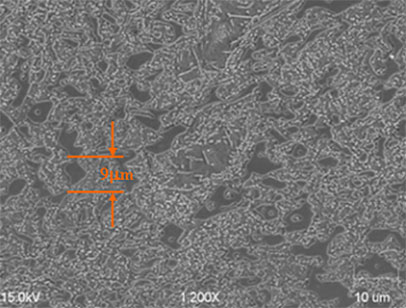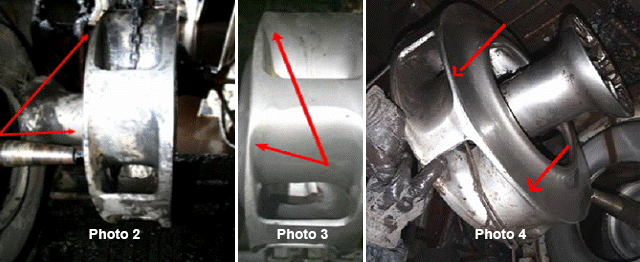Last month, Wilfley’s metallurgical genius, Dr. George Calboreanu, was given the opportunity to present a paper on our latest metallurgical break-through MAXALLOY® 5A hard iron at this year’s AIChE International Conference. Below is an abstract from the paper and a link to download the paper in full.
MAXALLOY® 5A is a 25% Chrome hard iron with average 740 HBN hardness and 27.2 KSI.(inch)1/2fracture toughness. These first-rate mechanical properties combined with 110,000 PSI tensile strength increased significantly the equipment service life when pumping phosphate rocks, heavy mining slurry, fracking and similar wear induced operations.
The superior mechanical properties of MAXALLOY® 5A hard iron are obtained through an optimized microstructure with excellent chromium carbide distribution, cuboidal shaped and unconnected secondary carbides evenly embedded into a fully martensitic matrix – see Photo 1.

Photo 1: MAXALLOY® 5A SEM microstructure view at X1,200 magnification. The average length of primary chromium carbides is 9-µm which is 3-times shorter than the chromium carbides length of 25% Chrome Industry Standard.
Also the chromium content is higher along the chromium carbide – matrix interfaces assuring an operational range of pH = 2.35 – 13.6.
The basic wear mechanism in centrifugal pumps is “impacting erosion” and “sliding abrasion” which depend on the pumping parameters and the material hardness and fracture toughness.

The Arrows above show the worn out “impeller” shrouds. Because of good Foundry Engineering the “impeller” edges are straight assuring the same pump head and flow.
Photo 2 and 3 show two old material “impellers” while Photo 4 shows the MAXALLOY® 5A “impeller” after establishing a record service life. When using MAXALLOY® 5A “impeller” the average production increased 225% Tons pumped material and 231% operating hours.
| Performance | MATERIAL | ||
| Old | Old | MAXALLOY® 5A | |
| Pumped [T] | 96,978 | 182,561 | 314,480 |
| Operation [hr.] | 316 | 645 | 1,109 |
